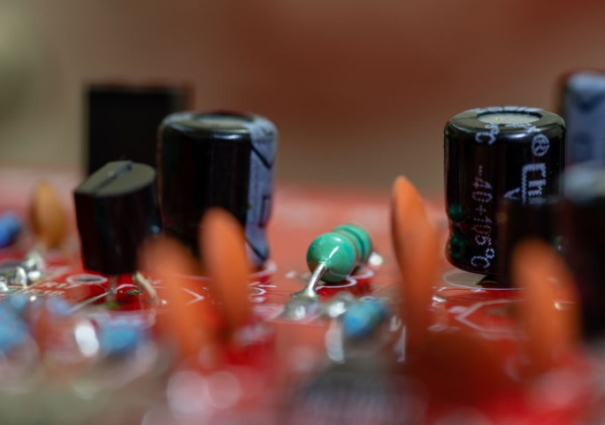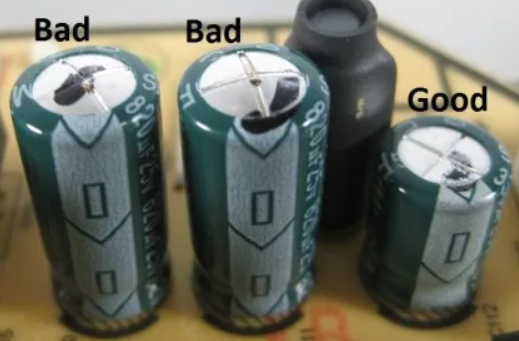Circuit board capacitors play a vital role in the world of electronic devices, ensuring their proper functioning and performance. Understanding the significance of capacitors and their function on circuit boards is essential for anyone involved in electronics.
This article explores why circuit board capacitors are so important, what they do, the consequences of capacitor failure, and how to identify faulty capacitors.

Why Capacitor on Circuit Board are So Important
Capacitors are essential components on circuit boards for several reasons:
-
Filtering and Smoothing: Capacitors are commonly used for filtering and smoothing electrical signals. They can stabilize voltage levels by storing and releasing electrical energy, ensuring a consistent and smooth flow of current throughout the circuit. This helps in reducing noise, ripple, and interference in the circuit.
-
Decoupling: Capacitors are crucial for decoupling in integrated circuits and electronic systems. They help in suppressing high-frequency noise and ensuring that sensitive components receive a steady and clean power supply. By providing a local energy buffer, capacitors prevent voltage fluctuations that could affect the performance of electronic components.
-
Timing and Tuning: Capacitors play a significant role in timing circuits and frequency-dependent circuits. They can be used in conjunction with resistors and inductors to control the timing of signals and adjust the frequency response of a circuit. Capacitors help set the time constants in RC circuits and determine the resonant frequency in LC circuits.
-
Energy Storage: Capacitors store electrical energy in an electric field when they are charged. They can then release this stored energy when required. Capacitors are used for energy storage in various applications, such as flash units in cameras, backup power supplies, and smoothing out power supply fluctuations.
-
Circuit Stability: Capacitors contribute to the stability of electronic circuits by maintaining voltage levels, reducing noise, and preventing sudden voltage spikes or drops. They help in maintaining the proper functioning of electronic components and protecting them from damage that could result from unstable voltage levels.
-
Power Factor Correction: In power electronics and electrical systems, capacitors are used for power factor correction. They help improve the efficiency of power transmission by adjusting the phase relationship between voltage and current, thereby reducing reactive power and improving the overall power factor of the system.
In summary, capacitors are vital components on circuit boards due to their ability to store and release electrical energy, filter noise, stabilize voltage levels, control timing, and improve the performance and efficiency of electronic systems. Their versatile functions make them indispensable in a wide range of electronic applications and industries.

What Does a Capacitor Do on a Circuit Board
On a circuit board, capacitors play several important roles due to their unique electrical properties. Here are some key functions of capacitors on a circuit board:
-
Energy Storage: One of the primary functions of capacitors is to store electrical energy in an electric field. When a voltage is applied across a capacitor, it charges up and stores energy. This stored energy can be released back into the circuit when needed.
-
Filtering and Smoothing: Capacitors are commonly used for filtering and smoothing electrical signals. They can absorb and release electrical energy quickly, helping to stabilize voltage levels and reduce noise and fluctuations in the circuit. Capacitors are essential for maintaining a steady and smooth flow of current.
-
Decoupling: Capacitors are crucial for decoupling in electronic circuits, especially in integrated circuits (ICs). By placing capacitors near power and ground connections of ICs, they help in supplying a stable and noise-free power source to sensitive components. Capacitors act as energy reservoirs that prevent voltage ripples and maintain a clean power supply for the IC.
-
Timing and Tuning: Capacitors are essential components for timing circuits and frequency-dependent circuits. In combination with resistors and inductors, capacitors can control the timing of signals and adjust the frequency response of a circuit. They help set time constants in RC circuits, determine resonant frequencies in LC circuits, and play a key role in oscillator circuits.
-
Coupling and Signal Processing: Capacitors can be used to couple or block different AC signals in a circuit. They allow AC signals to pass while blocking DC signals, enabling AC coupling between stages of an amplifier or filter. Capacitors are also used in signal processing circuits for AC-coupling, coupling capacitors, and signal coupling.
-
Power Factor Correction: In power electronics applications, capacitors are utilized for power factor correction. They help improve the power factor of electrical systems by adjusting the phase relationship between voltage and current, leading to more efficient power transmission and reduced energy losses.
Overall, capacitors are versatile components on circuit boards that serve various functions such as energy storage, filtering, decoupling, timing, signal processing, and power factor correction. Their ability to store and release electrical energy efficiently makes capacitors essential for ensuring the proper function, stability, and performance of electronic circuits and systems.

Consequences of Capacitor Failure on a Circuit Board
When capacitors fail on a circuit board, it can lead to various consequences that may affect the performance and reliability of the electronic device. Here are some common consequences of capacitor failure on a circuit board:
-
Electrical Malfunctions: A failed capacitor can cause electrical malfunctions in the circuit board. This can manifest as voltage spikes, voltage drops, or unstable voltage levels, leading to erratic behavior of the electronic device.
-
Power Supply Issues: Capacitor failure can disrupt the stability of the power supply in the circuit. If decoupling capacitors fail, it can result in noise and interference affecting sensitive components, leading to power supply issues for integrated circuits and other components.
-
Signal Distortion: Failed capacitors can introduce signal distortion in the circuit board. This may cause fluctuations in signal levels, distortion in waveform shapes, or altered frequency responses, affecting the accuracy and reliability of signal processing in the electronic device.
-
Overheating: Capacitor failures can cause excessive heat generation in the circuit board due to increased current flow or other electrical anomalies. Overheating can damage surrounding components, degrade circuit board materials, and pose a fire hazard in extreme cases.
-
System Instability: Capacitor failure can result in system instability, leading to random resets, crashes, or malfunctions in the electronic device. Unstable voltage levels caused by faulty capacitors can disrupt the proper operation of the circuit, affecting the overall performance and reliability of the system.
-
Reduced Efficiency: When capacitors fail, the efficiency of the circuit board and the electronic device can be significantly reduced. This may result in increased power consumption, decreased operational performance, and compromised functionality of the device.
-
Component Damage: In severe cases, capacitor failures can damage other components on the circuit board. Voltage spikes or excessive current caused by a failed capacitor can impact neighboring components, leading to a domino effect of failures and potential costly repairs.
-
Safety Risks: Capacitor failures can pose safety risks in electronic devices, especially if overheating or electrical short circuits occur. In certain situations, capacitor failures can lead to electrical hazards, risking electrical shocks or fires if not addressed promptly.
It is crucial to regularly inspect and monitor capacitors on circuit boards for signs of degradation or failure to avoid these consequences. Timely replacement of faulty capacitors is essential to maintain the performance, reliability, and safety of electronic devices and their associated circuit boards.

How to Tell If a Capacitor is Bad on a Circuit Board?
Identifying a faulty or bad capacitor on a circuit board can be crucial for maintaining the performance and reliability of electronic devices. Here are some common methods to determine if a capacitor is bad on a circuit board:
-
Visual Inspection:
- Look for physical signs of capacitor failure such as bulging or leaking electrolyte, cracks in the casing, or a domed appearance on the top of the capacitor. Any of these visual indicators can suggest a faulty capacitor.
-
Electrolyte Leakage:
- Leakage of electrolyte, a corrosive substance inside electrolytic capacitors, is a clear sign of a bad capacitor. The presence of dried or leaked electrolyte around the capacitor terminals indicates a failure.
-
ESR (Equivalent Series Resistance) Testing:
- Measuring the Equivalent Series Resistance of a capacitor can help identify a faulty capacitor. A high ESR reading indicates a capacitor that may be failing or already failed.
-
Capacitance Testing:
- Using a multimeter with a capacitance testing feature, you can measure the capacitance of the capacitor. Compare the measured value with the rated capacitance value on the capacitor. A significant deviation may indicate a faulty capacitor.
-
Voltage Testing:
- Test the capacitor's ability to hold a charge by checking the voltage across it. A capacitor that cannot retain the specified voltage level may be faulty.
-
In-Circuit Testing:
- In-circuit testing involves analyzing the capacitor's behavior within the circuit. Check for abnormal readings or signals that could indicate a problem with the capacitor's functionality.
-
Derating and Temperature Testing:
- Capacitors are sensitive to temperature fluctuations. Excessive heat can degrade capacitor performance. Test the circuit board for temperature abnormalities, which may indicate capacitor issues.
-
Performance Testing:
- Observe the performance of the electronic device. If there are power supply fluctuations, erratic behavior, or system instability, it could be due to a faulty capacitor affecting the circuit board.
-
Replacement and Confirmation:
- If you suspect a capacitor is bad based on the above tests, consider replacing it with a new capacitor and observe if the issues are resolved. If replacing the capacitor restores proper functionality, it confirms that the initial capacitor was faulty.
Regular inspection and maintenance of capacitors on circuit boards can help prevent issues related to capacitor failure and ensure the efficient operation of electronic devices.



